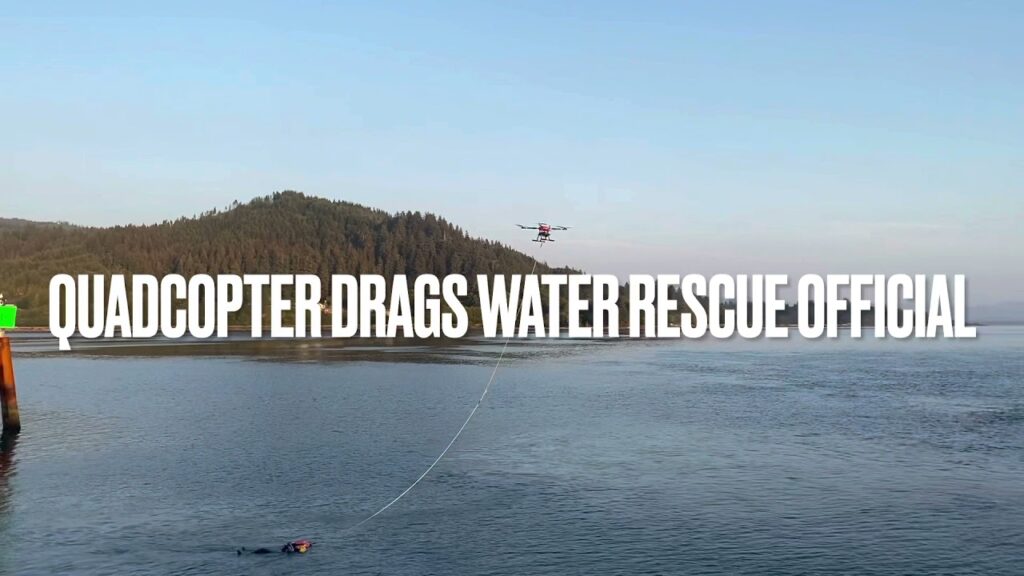Ever since I got my first taste of flight with a little toy quadcopter, I’ve been hooked on drones. The ability to see the world from above, to capture perspectives you just can’t get any other way – it’s magic. But what’s even more incredible is seeing this technology move beyond just cool aerial shots and into real-world applications that matter. And right now, one of the most exciting areas has to be rapid water rescue drones. We’re talking about machines that can potentially cut through precious response time and get aid to someone in trouble faster than ever before. This isn’t science fiction; it’s happening now, and some awesome folks on YouTube are showing us exactly how. Let’s dive into some key insights gleaned from their videos – it’s a thrilling glimpse into the future of water safety!
Key Takeaways from the Water’s Edge
Here’s what I’ve pulled from some fascinating videos showcasing the potential of rapid water rescue drones:
-
Flying Lifebuoys are a Game-Changer (Video 1): Imagine a drone, agile and swift, carrying a lifebuoy directly to someone struggling in the water. That’s the reality being showcased, and it’s impressive. The “Flying Lifebuoy Drone” video highlights the tech behind it, emphasizing rapid deployment and accuracy. Think about the seconds saved compared to traditional methods – those seconds can be the difference between life and death. You can almost hear the whir of the rotors as it races against time.
-
Drones Offer Crucial Aerial Perspectives (Videos 2 & 5): While video 2 is simply titled “Drones used for water rescue,” it underscores a fundamental point: drones provide an unparalleled overview. Similarly, video 5, “Drone Spots Man In Night Water Rescue,” dramatically illustrates the power of a thermal camera coupled with an aerial platform. Imagine the darkness, the choppy water – trying to spot someone in distress from the shore is incredibly difficult. A drone with thermal imaging cuts through that visual noise, making rescue efforts far more effective, especially at night.
-
Swift Water Doesn’t Ground These Rescuers (Video 4): “Swift Water Rescue Drone Footage” offers a dramatic look at the drone’s role in a real emergency. The description mentions a harrowing rescue where people were trapped on their car roof. You can picture the rushing water, the precarious situation – deploying a drone in such conditions gives rescuers a vital assessment tool and potentially a way to deliver aid or guidance before they can physically reach the victims.
-
Training Makes Perfect (and Safer) Rescues (Video 6): Video 6, showcasing “PETERBOROUGH FIREFIGHTERS ANNUAL ICE WATER RESCUE TRAINING (DRONE FOOTAGE),” might not be a live rescue, but it’s just as crucial. It highlights how drones are being integrated into training exercises. This allows firefighters to practice scenarios, assess risks from above, and get comfortable using drones as part of their toolkit. The cold air, the slippery ice – these training exercises, captured by drones, ensure they’re prepared for the real deal.
-
Innovation is Happening Globally (Video 3): The title of video 3, “Flying lifebuoy transforms water rescues #drone #lifebuoy #drowning #coolgadgets #china #chinatech,” hints at a broader, global movement. It’s not just one company or one country exploring this; innovation is happening across borders, pushing the boundaries of what these devices can do.
Soaring Innovation: Peering into the Future of Water Rescue
These videos collectively paint a picture of a rapidly evolving field. We’re moving beyond simply spotting people in distress. The integration of payload delivery systems, like the lifebuoy, marks a significant leap. Think about the engineering challenges: designing a drone that’s stable enough to carry and accurately deploy a life preserver, all while battling wind and potentially wet conditions. The developers are clearly finding ingenious solutions.
Looking ahead, I expect to see even more sophisticated sensor technology integrated into these rescue drones. Imagine drones with advanced AI capable of autonomously identifying people in the water, even in challenging conditions. Perhaps we’ll see drones that can deploy inflatable rafts or even carry small emergency kits. The potential for faster, more efficient, and ultimately safer water rescues is immense. The buzz of the motors overhead could soon be a reassuring sound for those in peril.
The Future is Airborne, and Lives are Being Saved
It’s incredibly inspiring to see the drone community contributing to such a vital application. These glimpses into real-world use and training demonstrate that rapid water rescue drones are not just a cool concept – they’re becoming an essential tool for emergency services. The ingenuity on display in these videos, from the simple act of spotting someone in the dark to the complex mechanics of delivering a lifebuoy, is a testament to the power of drone technology.
Ready to witness this technology in action? Scroll down to see the videos themselves and join me in watching the future of water rescue take flight!






